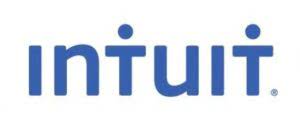- January 14, 2021
- Bookkeeping
- No Comments
Contribution margin income statements: a complete guide 2025

Unlike the traditional income statement that categorizes costs as either cost of goods sold or operating expenses, the contribution format statement focuses on identifying costs that vary directly with sales levels. This helps in calculating the “contribution margin,” which is the revenue remaining after variable costs that can contribute to fixed costs and profit. The contribution margin income statement is a superior form of presentation, because the contribution margin clearly shows the amount available to cover fixed costs and generate contribution margin income statement a profit (or loss). It is useful to create an income statement in the contribution margin format when you want to determine that proportion of expenses that truly varies directly with revenues. The contribution margin format can be used to prepare segmented income statements. The contribution margin income statement classifies costs on the basis of cost behavior.
Traditional vs.Contribution Format Income Statements
The fixed-costs would Accounting for Marketing Agencies still remain, however, creating a loss for the year. To calculate sales, take the price of the product and multiply by the number of units sold. Choosing what suits your business best to manage your accounting operations, including creating contribution statements, boils down to your needs and market dynamics.
Total Income Before Tax
This situation is called the “step cost situation” wherein a block of expenses must be incurred to accommodate an increase in the level of activity. For example, rent for the building that houses production will remain the same whether a business produces 1 or 1,000 units of products. Fixed costs on other hand don’t increase or decrease with the level of activity. For example, raw materials cost increases the more products are manufactured.
- This information is invaluable for resource allocation, production planning, and strategic focus, enabling businesses to optimize their product mix for higher profitability.
- These costs don’t fluctuate with the level of production or sales an item makes—which is why they’re sometimes called fixed production costs.
- Low in price, easy to implement, and universal among small CPA firms, Quickbooks has conquered the accounting software market for small businesses.
- Do these labor-saving processes change the cost structure for the company?
- First, fixed production costs are aggregated lower in the income statement, after the contribution margin.
Practice Video Problem 5-1 Part 2: Segment cost volume profit analysis LO6
- Think of a contribution margin income statement as the financial roadmap that tells you which products are holding the fort and which ones might need a second look.
- In addition to companywide income reporting, managers or owners also need to measure the profitability of individual segments within their organization.
- Variable costs are less than COGS, which also may include fixed and variable costs, so a business’s contribution margin is usually higher than its gross margin.
- Used by savvy business owners and executive managers, contribution statements provide insights not obtainable elsewhere in accounting management’s repertoire of financial statements, sheets, and reports.
- A contribution margin income statement for the total company and an example of the company’s segments are presented in Exhibit 5-1.
Cost behavior is how a cost reacts to changes in production or sales quantity. The contribution margin income statement format is used to allocate costs to the identified segments and then to prepare segmented income statements reporting the profitability of each segment. Managers can use this data to make informed decisions about the individual segments in relation to the whole organization. So, why use CARES Act a contribution margin income statement instead of the traditional format? It’s ideal for internal analysis and helps with pricing, production, and profitability decisions.


Fixed costs include all fixed costs, whether they are product costs (overhead) or period costs (selling and administrative). Therefore if there are units that are not sold, a portion of the fixed overhead ends up in inventory. Exhibit 5-3 illustrates the functionality of segmented income statement reporting. While total company net operating income is valuable information, it does not show which segments within the organization are performing well and which are not. As shown in Exhibit 5-3, the social media games division is profitable overall however only one of the product lines within that division is profitable.


 +91 92155 56156, 92159 08888,
+91 92155 56156, 92159 08888,  studymatrixhsr@gmail.com
studymatrixhsr@gmail.com 



